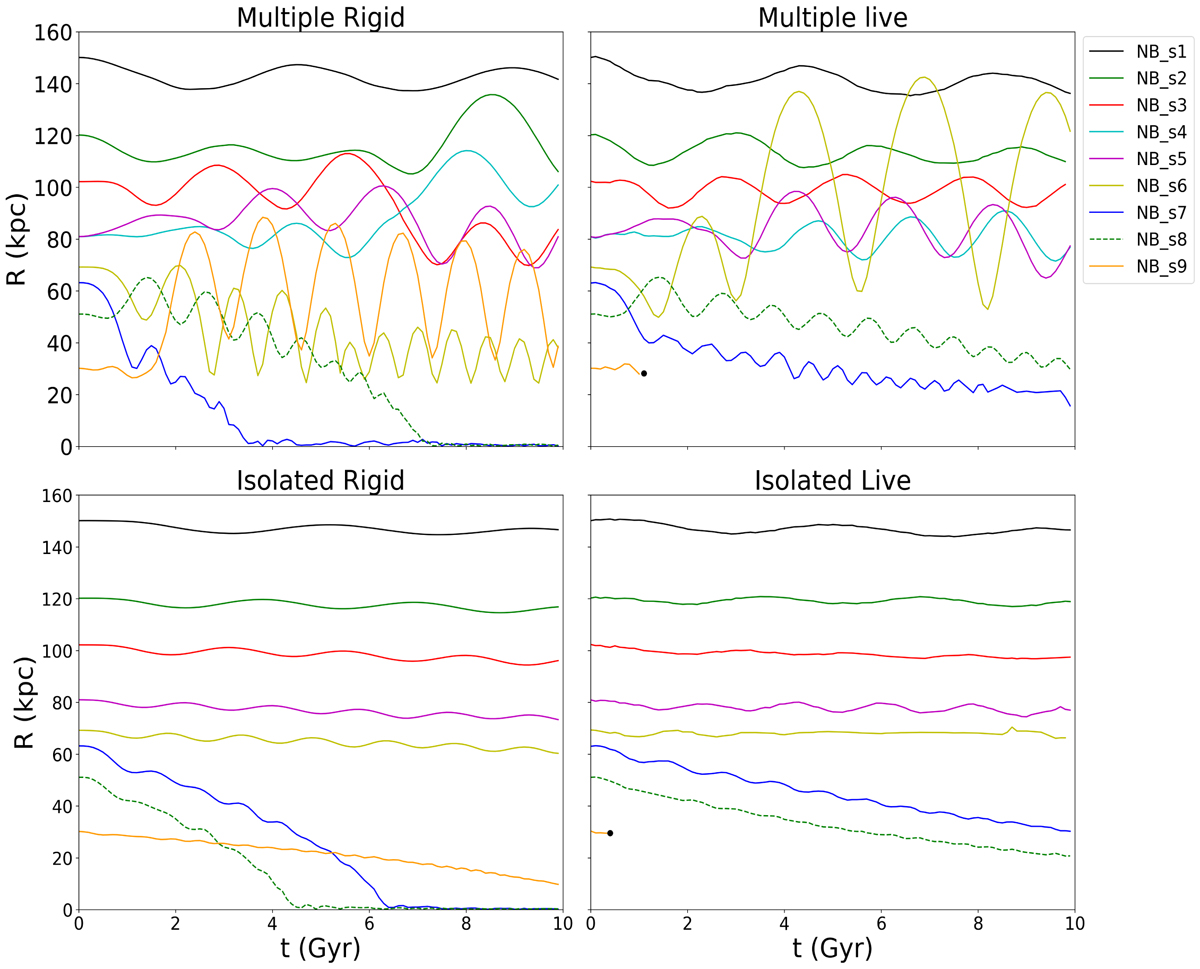Fig. 4.

Download original image
NB models of a MW-mass halo host with nine sinking satellites located in the same orbital plane but falling from different angular and radial positions (see Fig. 2, bottom panels). All satellites have an initial speed corresponding to the one of a circular orbit. Top-left panel: simultaneous infall of the nine satellites simulated as a rigid smoothed Plummer density distribution. Top-right panel: similar to the top-left panel, but satellites are now described by an “intermediate” compact NFW density distribution (see Col. 4 in Table 1). Bottom-left panel: sinking of each one of the rigid satellites in the top-left panel, individually, meaning that no other perturber is present in the halo. Bottom-right panel: similar to the bottom-left panel but for the “intermediate” compact satellites. In each of the bottom panels we show eight independent experiments, where the initial mass profile of the host halo has been modified to include the mass of the remaining non-simulated satellites at its initial radial location. We excluded the cyan line case because it is the same as the magenta case. Black points indicate where the Rockstar halo finder cannot find the satellite because it lies in the central part of the host, see Table 2 for the initial conditions.
Current usage metrics show cumulative count of Article Views (full-text article views including HTML views, PDF and ePub downloads, according to the available data) and Abstracts Views on Vision4Press platform.
Data correspond to usage on the plateform after 2015. The current usage metrics is available 48-96 hours after online publication and is updated daily on week days.
Initial download of the metrics may take a while.


